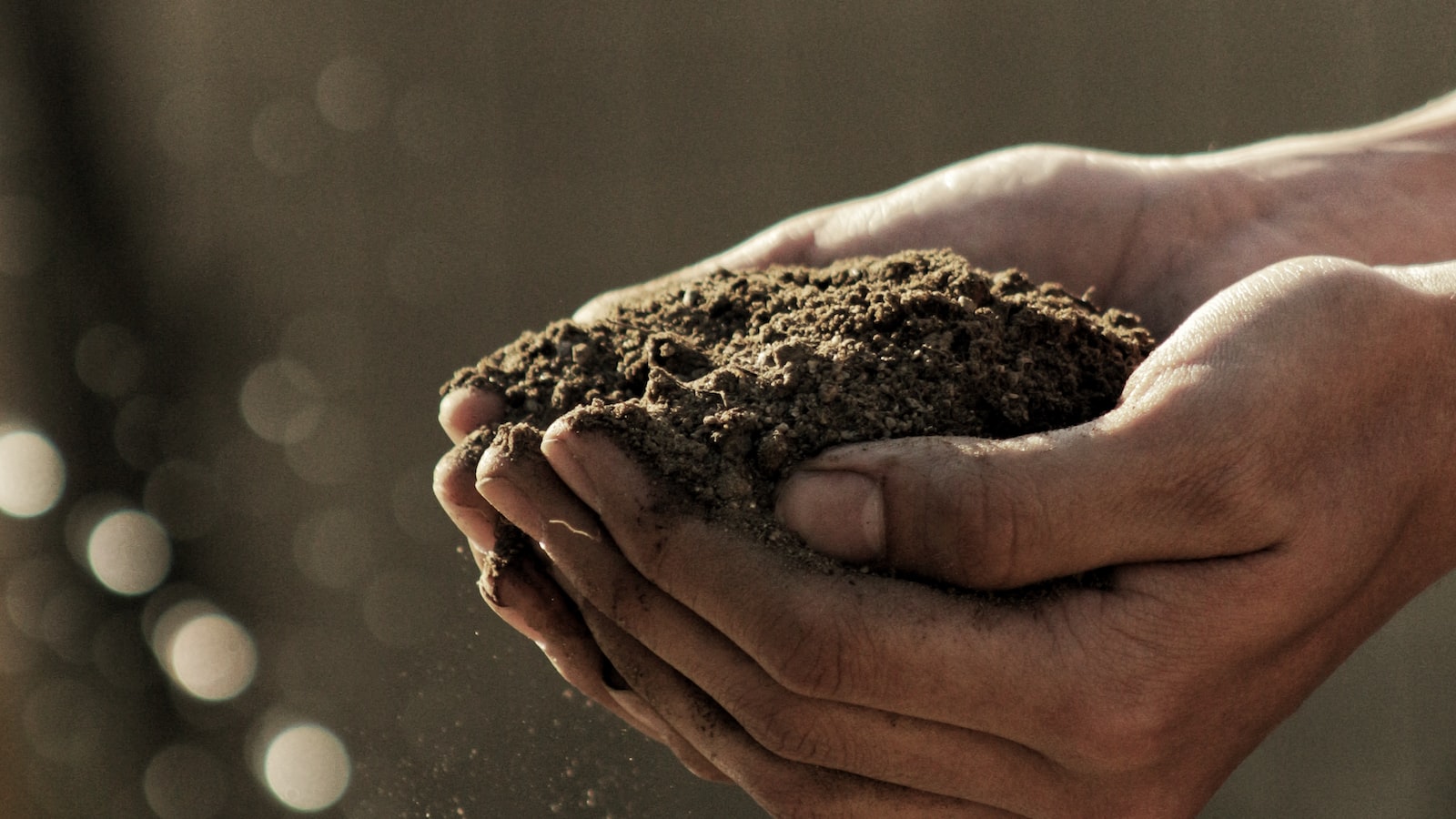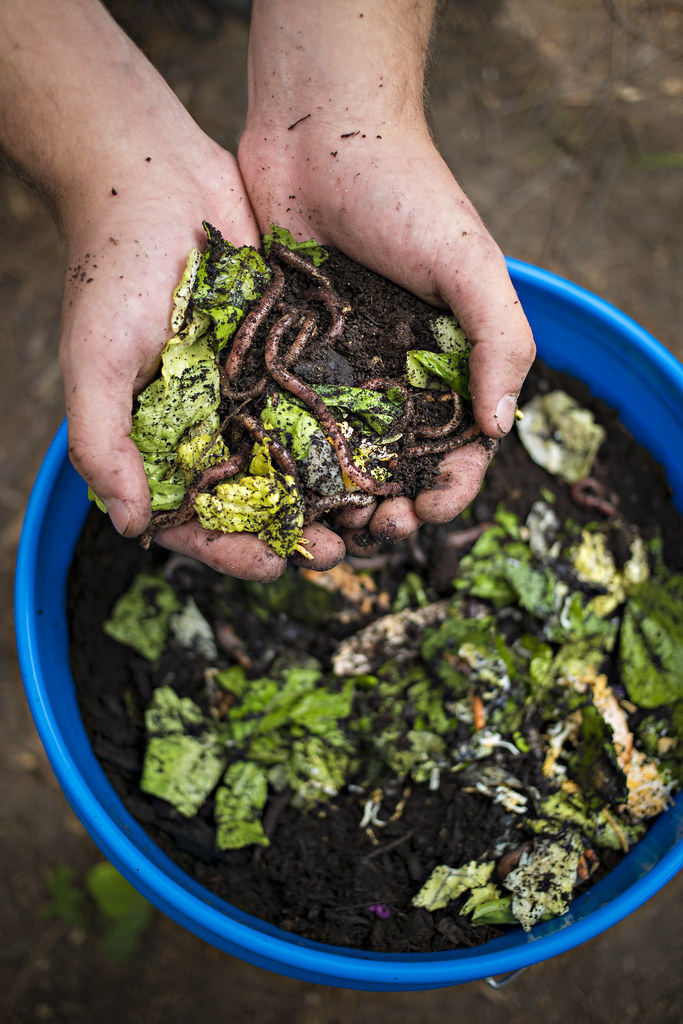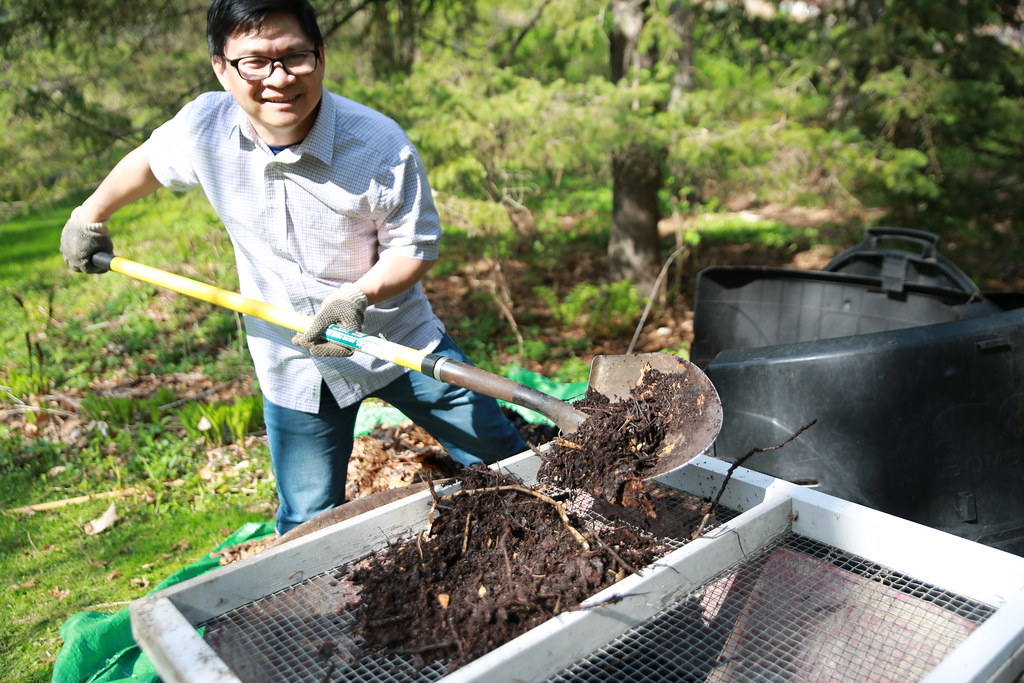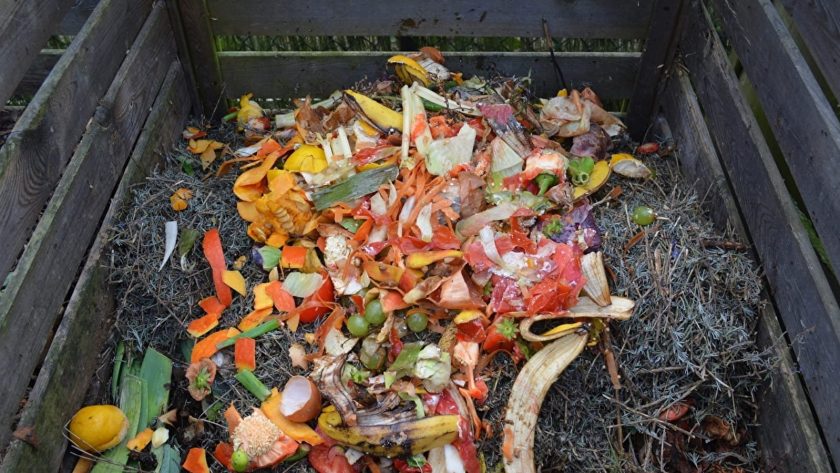Unlocking the hidden power of nature, composting has emerged as an enchanting alchemy for every aspiring gardener. While the idea of transforming organic materials into rich, nutrient-dense soil might seem like a mystical endeavor, fear not, for we are here to guide you through the magical journey of setting up a composting system in your very own garden. In this article, we will explore the captivating art of composting, unveiling the secrets to creating an harmonious relationship with Mother Earth that will nurture your plants like never before. So, gather your curiosity, don your green thumb, and let’s embark on an adventure that will leave your garden flourishing and your soul in awe.
Creating Your Own Composting System: A Guide to Sustainable Gardening
Essential Steps for Setting up a Composting System
Creating your own composting system is an empowering and eco-friendly way to nurture your garden and reduce waste. By following these essential steps, you can establish a sustainable composting routine that not only enriches your soil but also contributes to the greater good.
1. Choose the Perfect Spot
Identify a suitable location for your composting system. Ideally, select an area that receives partial sunlight and is easily accessible. Remember to keep the composting site away from your home to avoid attracting unwanted pests.
2. Collect Organic Materials
Start collecting a diverse range of organic materials that can be composted. These can include kitchen scraps like fruit and vegetable peels, coffee grounds, and eggshells. Collect yard waste such as fallen leaves, grass clippings, and small branches. It’s important to balance “green” materials high in nitrogen, like fresh produce and grass, with “brown” materials rich in carbon, like dried leaves and wood chips.
3. Build Your Compost Pile
Begin building your compost pile using alternating layers of green and brown materials. Make sure to moisten the pile periodically, ensuring it stays damp but not waterlogged. Consider turning the pile every few weeks to aerate it and accelerate decomposition. Remember to manage the moisture levels and adjust the pile’s size depending on your available space and composting needs.
4. Maintain and Monitor
Regularly add organic materials to your compost pile, ensuring a balanced mix of green and brown components. Remember to cut or shred larger materials into smaller pieces to facilitate quicker decomposition. Monitor the moisture and temperature levels, aiming for a damp, yet not soggy, consistency. Keep an eye out for beneficial earthworms and other decomposers, as their presence is an indication of a healthy composting process.
5. Harvest and Utilize Your Compost
After several months, your compost will transform into nutrient-rich, dark humus. This « black gold » can be used to top-dress garden beds, enrich potting soil, or create nutrient-packed compost tea. Apply your compost to plants and enjoy the benefits of enhanced soil fertility and improved plant health.
By following these steps, you will be on your way to establishing a thriving composting system that not only promotes sustainable gardening but also fosters a deep connection to the earth and its natural cycles.

Choosing the Right Composting Method for Your Garden
When it comes to creating a thriving garden, composting is essential. It nourishes the soil, increases water retention, and reduces the need for chemical fertilizers. But with various composting methods to choose from, how do you decide which one is best for your garden? Let’s explore a few options:
1. Traditional Composting: This method involves mixing organic matter like kitchen scraps, grass clippings, and leaves in a compost bin or heap. It requires regular turning to aerate the pile and speed up decomposition. Traditional composting is perfect if you have ample space and want to create a large volume of nutrient-rich compost over time.
2. Vermicomposting: If you have limited space or live in an urban environment, vermiculture might be the solution for you. Using earthworms, this method turns organic waste into nutrient-rich vermicast, known as black gold. A worm bin placed indoors or outdoors can efficiently convert kitchen scraps into compost. It’s an excellent option for small gardens or for gardeners who want to compost year-round.

Essential Steps to Start Composting in Your Yard
Composting is a fantastic way to harness the power of nature and turn your yard waste and kitchen scraps into rich, nutrient-packed soil. If you’re interested in starting your own composting system, we’ve got you covered with these essential steps.
First and foremost, you’ll need to choose a suitable location for your compost pile or bin. Look for a shady spot in your yard that is easily accessible but also discreet. This will help maintain the right temperature and moisture levels for optimal composting. Once you’ve found the perfect spot, it’s time to gather your composting materials. Remember, composting is all about balance, so aim for a mix of « greens » (nitrogen-rich materials like fruit and vegetable scraps, coffee grounds, and grass clippings) and « browns » (carbon-rich materials like dry leaves, straw, and newspaper).
Next, you’ll want to layer your composting materials to create a healthy ecosystem for decomposition. Start with a layer of browns, followed by a layer of greens, and continue this alternating pattern. You can speed up the decomposition process by occasionally turning the pile to introduce oxygen. However, avoid over-compacting the pile, as this can disrupt airflow. Add water as needed to maintain a moist but not soggy environment. Keep an eye on the temperature of your compost pile as well – a temperature between 110°F and 160°F is ideal for breaking down organic matter efficiently.
With these essential steps in place, you’ll be well on your way to enjoying the benefits of composting in your yard. Not only will you be reducing waste and helping the environment, but you’ll also be rewarded with nutrient-rich compost that can be used to nourish your garden plants. So roll up your sleeves, embrace the magic of decomposition, and start composting today!
Ensuring Success: Expert Tips for Maintaining Your Composting System
Are you looking to establish a successful composting system in your garden? Look no further! We have curated a list of expert tips to guide you through the process and ensure your composting efforts are fruitful. Composting not only reduces waste but also provides nutrient-rich soil for your plants, so let’s delve into the secrets of maintaining a thriving composting system.
1. Choose the right location: When setting up your composting system, location is key. Find a spot in your garden that receives a mix of sunlight and shade, ensuring the compost pile doesn’t dry out or become waterlogged. Also, select an area that allows for proper aeration, as oxygen is crucial for the breakdown of organic matter.
2. Balance your ingredients: To create nutrient-rich compost, it’s important to maintain a balance between carbon-rich »brown » materials and nitrogen-rich « green » materials. Brown materials include dried leaves, straw, and shredded paper, while green materials consist of grass clippings, vegetable scraps, and fresh green weeds. Aim for a ratio of approximately 3 parts brown to 1 part green to achieve optimal decomposition.
3. Turn and mix regularly: Regularly turning and mixing your compost pile helps accelerate the decomposition process. Use a garden fork or shovel to ensure that oxygen is evenly distributed throughout the pile, aiding in the breakdown of organic matter. Mixing also helps distribute moisture and avoids any unpleasant odors.
4. Maintain moisture levels: Adequate moisture is crucial for composting. Your compost pile should be moist, similar to a wrung-out sponge. If it becomes too dry, sprinkle it with water. Conversely, if it becomes too wet, add some dry brown materials to absorb excess moisture. This balance will provide an ideal environment for microorganisms to break down your compost quickly and efficiently.
5. Patience is key: Composting is a natural process that requires time. It can take anywhere from a few months to a year for your compost pile to fully decompose. Be patient and allow nature to work its magic. In the meantime, continue adding organic matter and maintain optimal conditions, and soon enough, you’ll be rewarded with nutrient-rich compost for your garden.
By following these expert tips, you’ll be well on your way to maintaining a successful composting system in your garden. Remember, composting is not only beneficial for the environment but also for the health and vitality of your plants. Start your composting journey today and enjoy the rewards of sustainable gardening!
And there you have it, the secrets to successfully establish a composting system in your garden. With a little bit of time, effort, and the help of nature’s recycling superheroes, you can transform your kitchen scraps and yard waste into nutrient-rich humus that will nourish your plants and foster a thriving ecosystem right in your backyard.
Remember, composting is not only beneficial for your garden but also for the environment. By diverting organic waste from landfills, you are reducing greenhouse gas emissions and contributing to the overall sustainability of our planet. So, don’t hesitate to join the composting revolution and make a difference, one compost pile at a time.
As you embark on this composting journey, don’t be discouraged if you face a few setbacks or challenges along the way. Like any natural process, composting takes time and experimentation to find the perfect balance. Take it as an opportunity to learn and grow, both as a gardener and as a steward of the Earth.
So, dig into your new composting adventure, armed with the knowledge and techniques you have acquired. Immerse yourself in the magic of decomposition, as you witness the transformation of waste into wonder. Your garden will thank you, and the planet will thank you. Happy composting!




